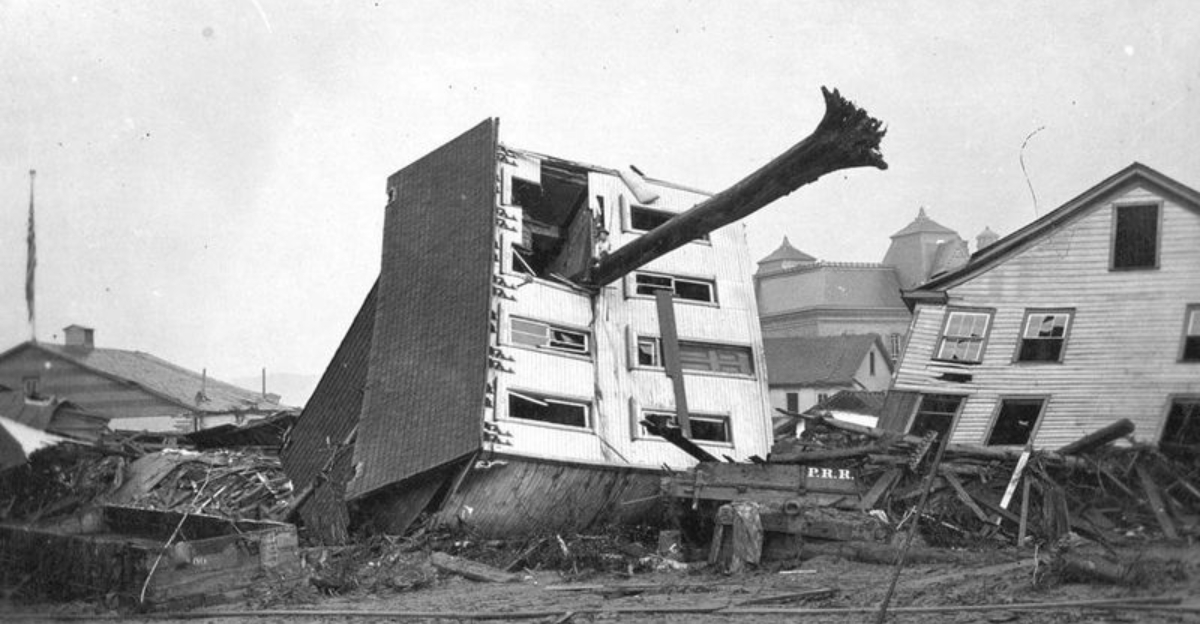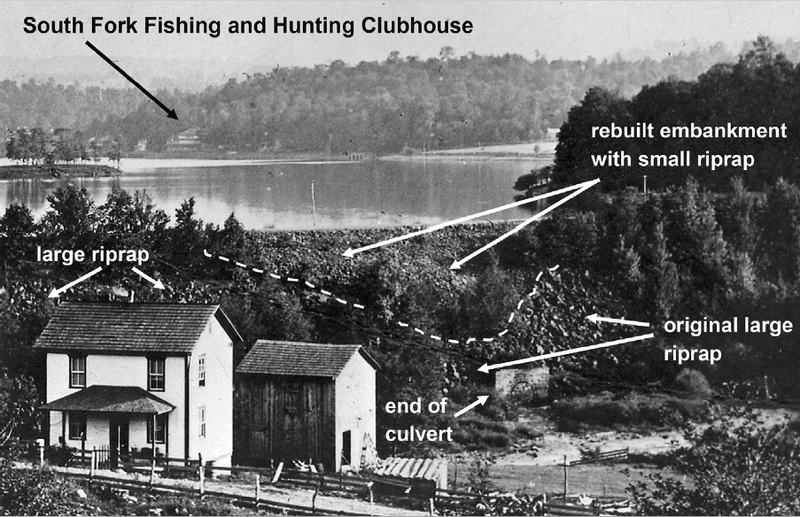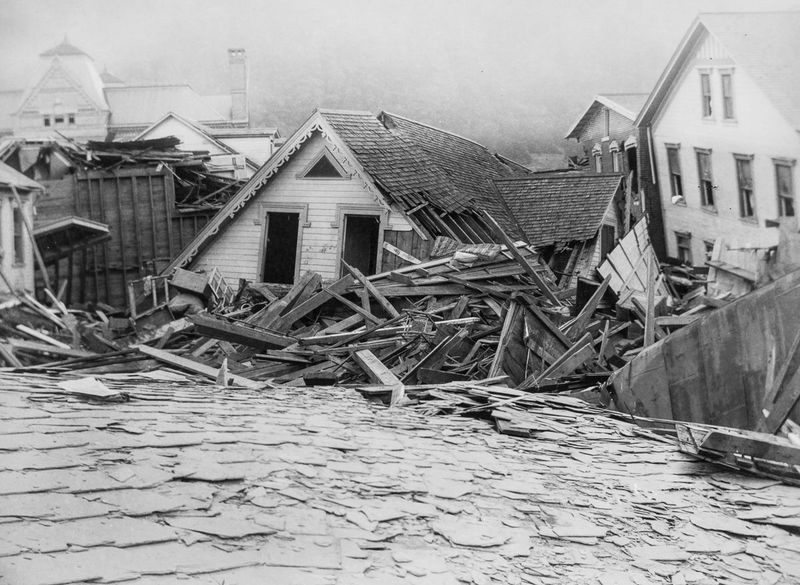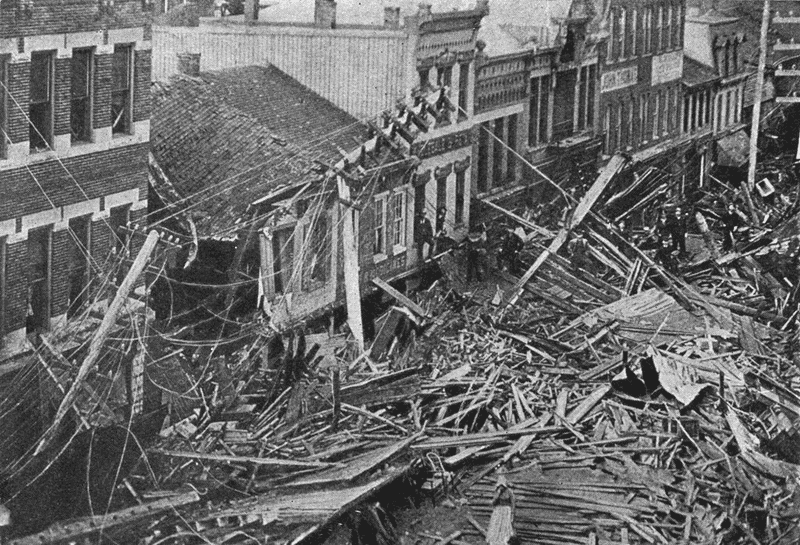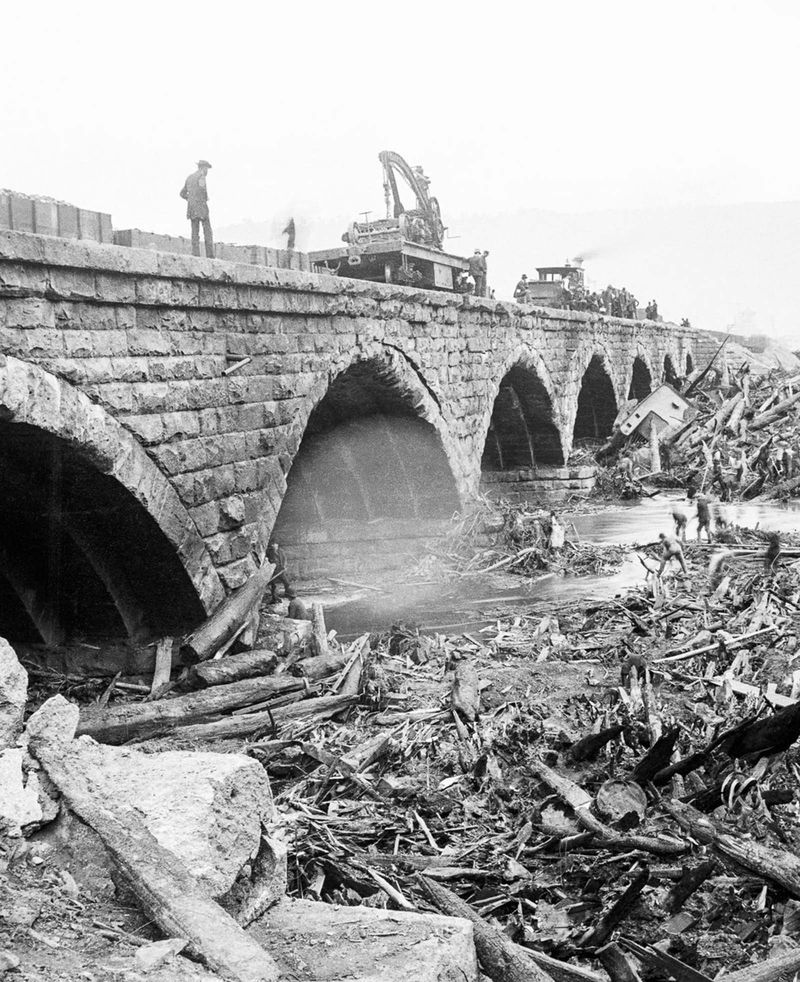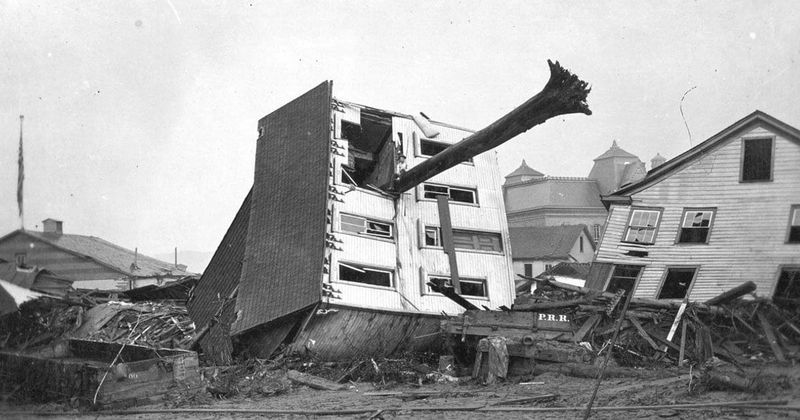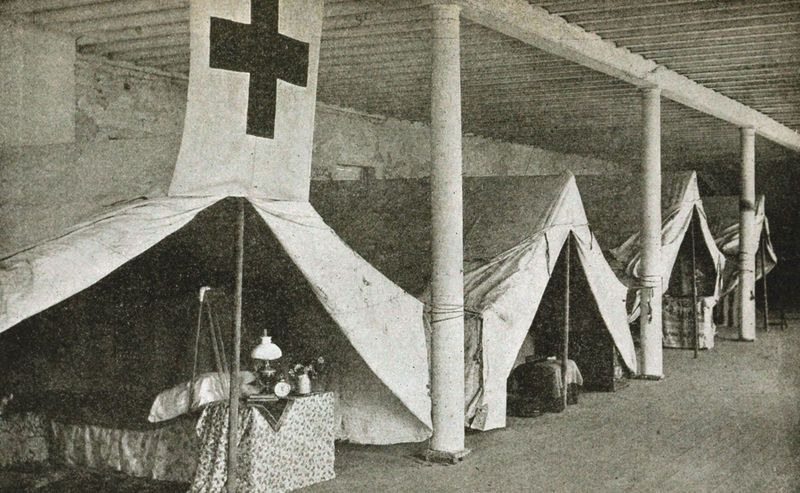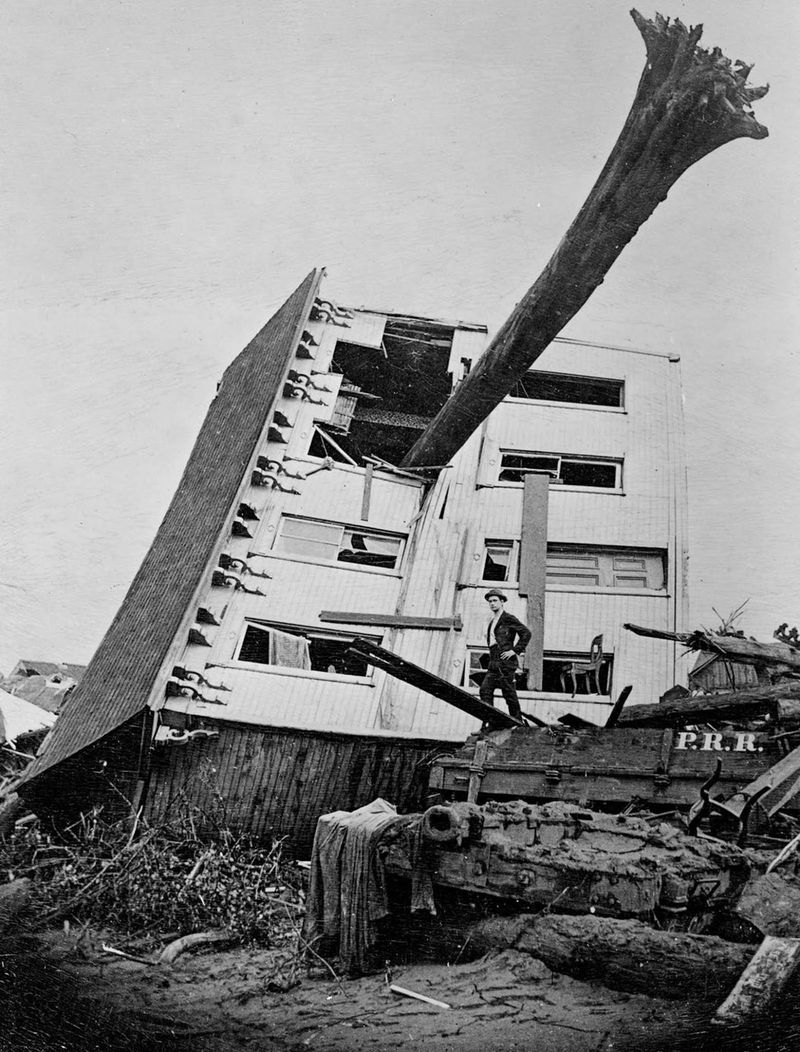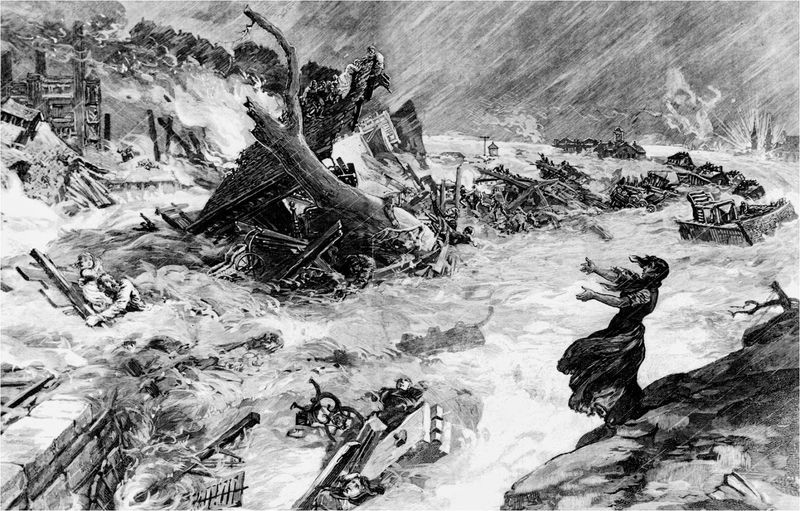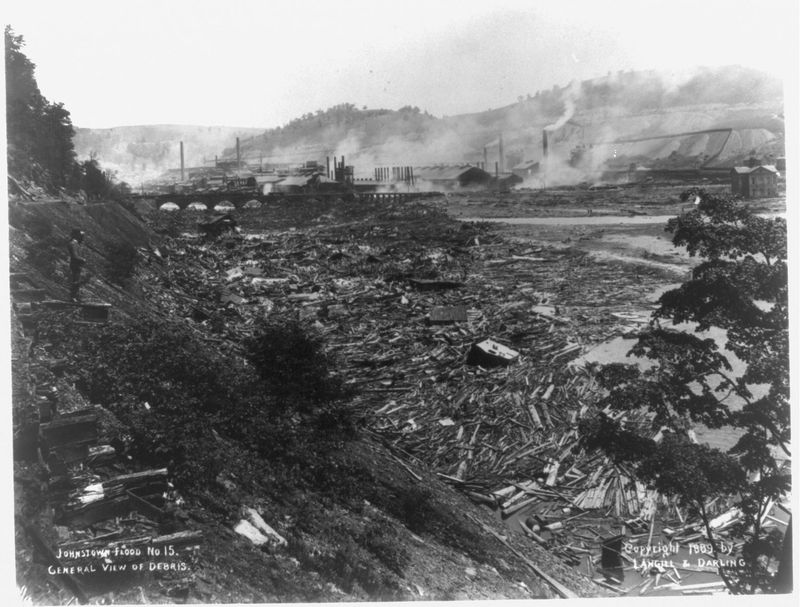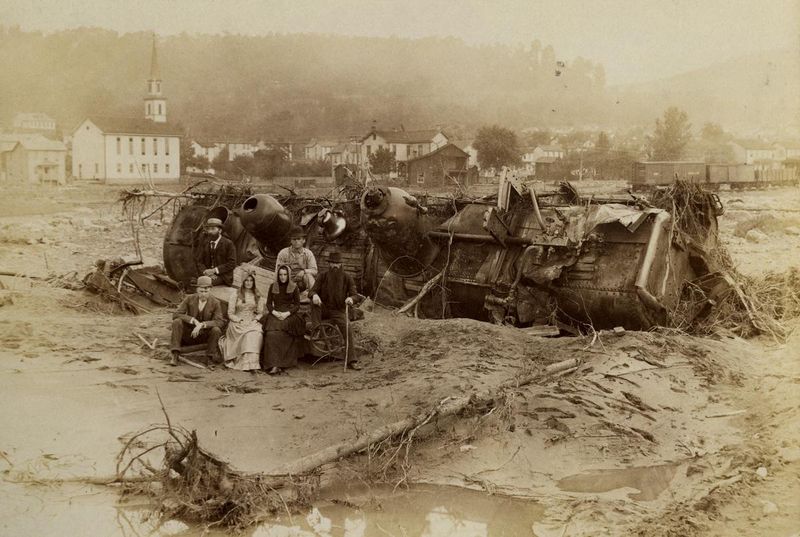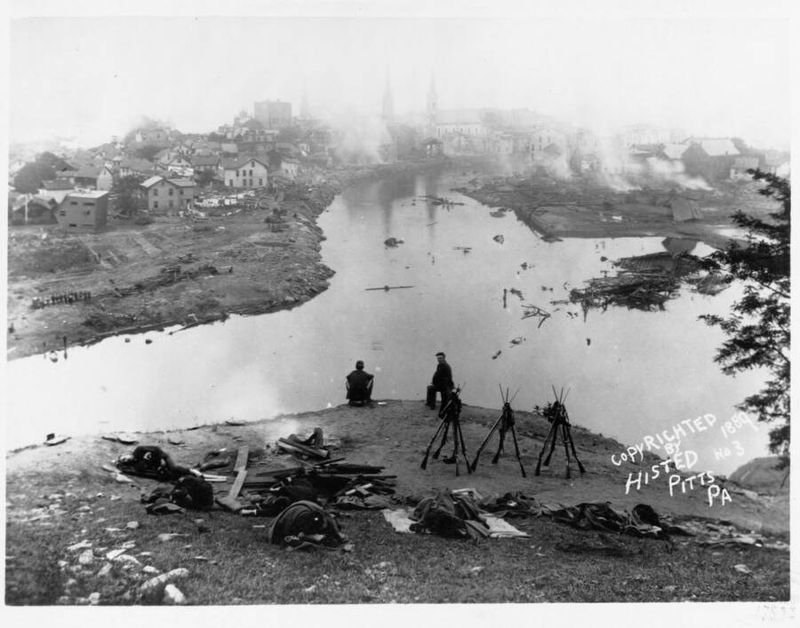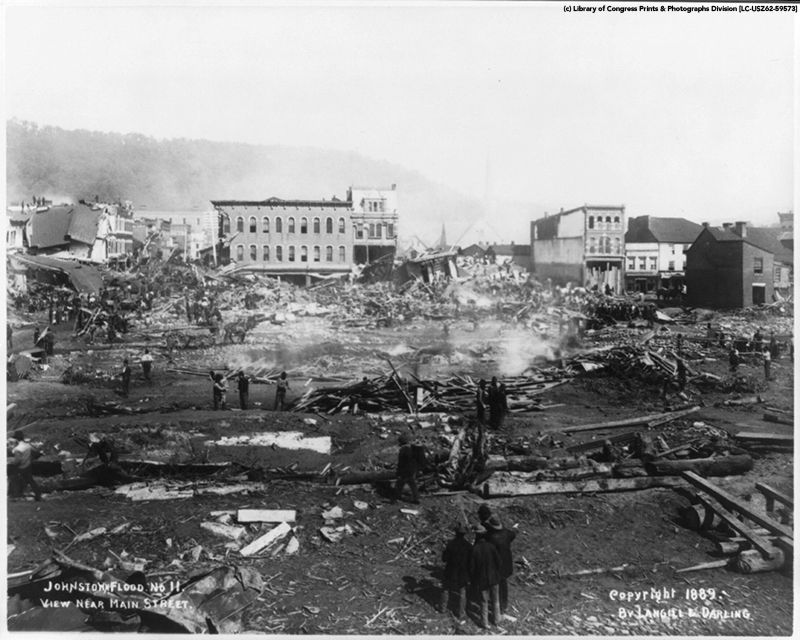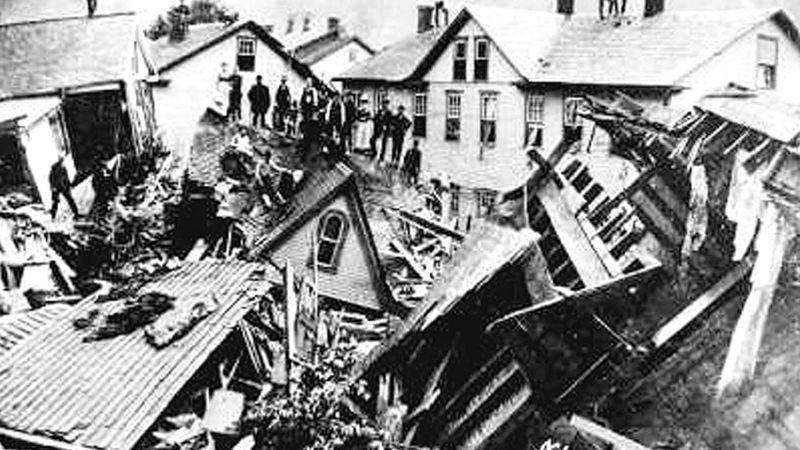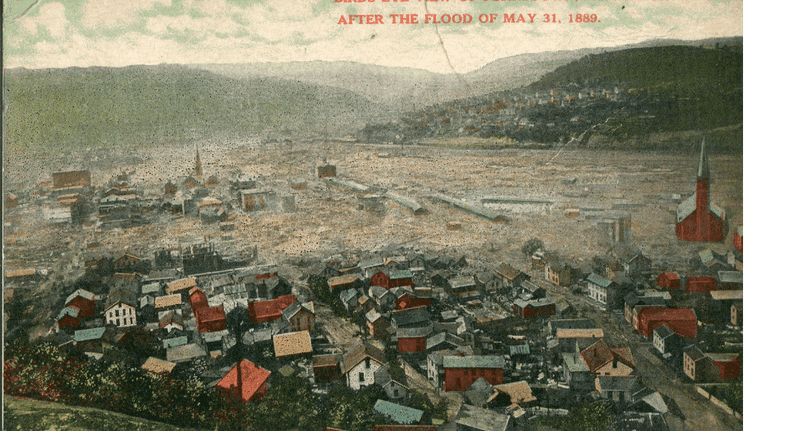On May 31, 1889, the peaceful town of Johnstown, Pennsylvania became the site of America’s deadliest dam disaster. When the South Fork Dam collapsed after days of heavy rain, it unleashed a wall of water that killed over 2,200 people in a matter of minutes. The catastrophe forever changed how America responds to disasters and revealed the deadly consequences of neglected infrastructure.
1. Wealthy Club Members Ignored Warning Signs
The South Fork Fishing and Hunting Club, playground for America’s industrial elite, repeatedly dismissed concerns about their dam. When local engineers pointed out dangerous modifications and deterioration, club officials waved away warnings.
Iron and steel tycoons including Andrew Carnegie and Henry Clay Frick owned luxurious cottages along Lake Conemaugh. They lowered the dam to widen the road for carriages and blocked the spillway with fish screens to prevent their expensive stock from escaping.
Despite visible leaks and previous close calls during heavy rains, the club refused to fund proper repairs that might have prevented the catastrophe.
2. A Wall of Water 60 Feet High
When the earthen dam finally gave way, it unleashed 20 million tons of water with apocalyptic force. Survivors described a roaring sound like thunder that grew deafening as the water approached.
The initial wave towered between 40-60 feet high and traveled at speeds reaching 40 miles per hour. Entire houses were lifted off foundations and carried away like toys in a bathtub.
One witness described it as “a huge hill rolling over and over.” The water’s dark color from debris and mud led many to mistakenly believe an actual mountain had collapsed into the valley.
3. Telegraph Operator’s Desperate Warnings
Unsung hero John Parke witnessed the dam beginning to crumble and frantically rode on horseback to South Fork telegraph office. Operator Emma Ehrenfeld sent desperate warnings downstream: “SOUTH FORK DAM IS BREAKING! FLEE TO THE HILLS!”
The messages reached several towns, but many residents had grown numb to frequent flood warnings. Some telegraph stations closed early for the Memorial Day holiday.
In Johnstown itself, warnings never reached officials who could order evacuation. Previous false alarms had created a dangerous complacency, leaving thousands in harm’s way when the water finally came.
4. The Stone Bridge Became a Deadly Trap
Johnstown’s massive stone railroad bridge survived the initial flood wave but created a deadly bottleneck. Debris piled against it formed a gruesome dam nearly 30 acres wide and 70 feet high.
Hundreds of survivors clung to this floating mass of wreckage. Then the unthinkable happened – oil tanks from ruptured railroad cars ignited. The debris pile became an inferno.
Witnesses reported hearing the agonized screams of those trapped in the burning wreckage. At least 80 people who had survived the initial flood perished in the flames while rescuers watched helplessly from shore.
5. Six-Year-Old Survivor’s Miraculous Journey
Little Gertrude Quinn became the flood’s most famous survivor. Swept from her father’s arms, the six-year-old clung to a floating mattress for hours as it careened through the churning waters.
“I bumped into houses and over trees,” she later recalled. “Sometimes I was on top of the water, sometimes under it.” When her makeshift raft approached land, rescuers formed a human chain to reach her.
Too exhausted to grab their hands, Gertrude was heroically snatched from the water by a man who risked his life. She lived to age 94, frequently sharing her story to preserve the flood’s memory.
6. Clara Barton’s Groundbreaking Relief Effort
The Johnstown disaster marked a turning point for American emergency response. Clara Barton, founder of the American Red Cross, arrived just five days after the flood with 50 doctors and nurses.
At 67 years old, Barton personally directed relief operations for five months. Her team established six relief hotels, three hospital tents, and distributed over $211,000 in cash and supplies—equivalent to millions today.
“I don’t know what would have become of us without the Red Cross,” wrote one survivor. This marked the first major domestic disaster response for the organization, establishing a model for future emergency relief efforts.
7. Bodies Found Hundreds of Miles Away
The flood’s devastating power scattered victims across an enormous area. Rescuers found bodies tangled in debris as far away as Cincinnati, Ohio—nearly 300 miles downstream.
Identification proved nearly impossible for many victims. Some bodies were so mangled by debris they were unrecognizable, while others were discovered weeks later in advanced decomposition. Temporary morgues displayed personal effects—watches, jewelry, clothing—hoping family members might recognize belongings.
The grim recovery effort continued for years. The final victim was discovered in 1911, twenty-two years after the flood, when workers found remains buried in silt during a construction project.
8. Barbed Wire Created a Deadly Web
Among the flood’s most horrific aspects was the role of Johnstown’s Gautier Wire Works. The factory produced miles of barbed wire, which the floodwaters carried downstream, creating a lethal net that ensnared victims.
Survivors described seeing people caught in these wire tangles, unable to free themselves as water levels rose. Rescuers with wire cutters worked frantically to free those trapped.
“The most pitiful sight was to see human beings caught in the wire like flies in a spider’s web,” wrote one witness. This cruel twist of fate transformed a product meant for peaceful farm use into an instrument of mass casualty.
9. Entire Families Vanished Without a Trace
The flood’s swift brutality erased entire family lines from existence. Records show 99 complete families—every single member—perished, leaving no descendants to mourn them.
The Hoffman family lost 20 members across three generations. In other cases, sole survivors faced unimaginable grief—one man lost his wife and nine children in a single afternoon.
Heartbreaking newspaper notices sought information about missing loved ones: “WANTED—Information of Charles Wilson, wife and five children who lived on Somerset Street.” For many families, closure never came as bodies were swept away, leaving only empty homes as silent memorials.
10. The World’s First Disaster Fundraising Campaign
Johnstown’s tragedy sparked unprecedented global generosity. Newspapers nationwide printed dramatic headlines, while telegraph wires carried appeals for aid. Within days, donations poured in from all 50 states and 18 foreign countries.
From schoolchildren’s pennies to Andrew Carnegie’s $10,000 check (equivalent to $300,000 today), the relief fund eventually reached $3.7 million—America’s first mass disaster fundraising effort.
Even countries with limited resources contributed. The Sultan of Turkey sent $400, while citizens of Germany, France and England organized benefit concerts. This outpouring established the template for disaster relief campaigns that continues to this day.
11. Survivors Turned to Makeshift Rafts
As waters rose with terrifying speed, Johnstown residents grabbed anything that might float. Families climbed onto rooftops, only to have entire houses torn from foundations and sent careening downstream like makeshift boats.
Sixteen people survived by crowding onto a barn roof that floated intact for miles. Others clung to mattresses, wooden doors, or furniture. One baby was famously placed in a metal washbasin that bobbed safely through the currents.
Many improvised rafts broke apart on debris, sending occupants back into the churning waters. For hours after the initial wave, rescuers along the shores pulled exhausted survivors from these floating sanctuaries.
12. The Flood Created a New Branch of Law
When survivors sought justice against the South Fork Fishing and Hunting Club, they encountered a devastating legal roadblock. Courts ruled the disaster an “Act of God,” despite clear evidence of negligence in dam maintenance.
This controversial decision sparked nationwide debate about corporate responsibility. Legal scholars cite the Johnstown cases as pivotal in developing modern liability law and the concept of “foreseeable harm.”
Not a single victim received compensation from club members. The legal precedents established, however, eventually led to stricter regulations for dam construction nationwide and influenced how courts handle disaster liability cases to this day.
13. A Forgotten Hero Saved Dozens
African-American resident Daniel Peyton emerged as an unlikely hero when the waters struck. Despite racial prejudice common in that era, Peyton’s exceptional swimming ability made him invaluable during the crisis.
Witnesses reported seeing him dive repeatedly into the churning waters, pulling at least 20 people to safety. After rescuing a mother and child, he returned to the waters despite exhaustion.
Tragically, Peyton disappeared during his final rescue attempt. His sacrifice went largely unrecognized in official accounts for decades. Recent historical research has finally brought attention to his extraordinary courage, with a memorial plaque dedicated in 2014.
14. The Disaster Permanently Altered American Geography
Beyond human casualties, the flood physically reshaped Pennsylvania’s landscape. The water’s force scoured away entire hillsides and deposited millions of tons of sediment downstream, permanently altering the Conemaugh Valley’s topography.
In some areas, the original ground level lies buried under 20 feet of flood-deposited soil. The disaster prompted the first comprehensive river management projects in American history.
Visitors today can still see physical evidence of the catastrophe. The South Fork Dam’s broken remains stand as a stark monument, while LiDAR scanning technology has recently revealed previously unknown flood channels carved through bedrock—lasting scars from that fateful day.
